*We are a reader-supported website. When you buy through links on our site, we may earn a small affiliate commission at no extra cost to you. Home Media Entertainment does not accept money for reviews.*
Introduction
High Dynamic Range (HDR) has revolutionized the visual landscape of home entertainment, offering viewers a level of realism and vibrancy previously unattainable. In Part 1 and Part 2 of our series we set the foundations of what HDR is. In this installment of our “HDR Explained” series, we delve into the realm of HDR formats, a critical aspect for anyone seeking the optimal visual experience.
In the dynamic universe of HDR, understanding various formats is pivotal. HDR formats dictate how content is encoded, displayed, and ultimately experienced by users. This article navigates through the intricacies of popular HDR formats, shedding light on their individual characteristics and helping you make informed decisions.

HDR10
HDR10 stands out as the cornerstone in the HDR landscape, providing a baseline for high-quality imaging. This format supports a 10-bit color depth, a wider color gamut, and a higher peak brightness compared to standard dynamic range (SDR) content. The HDR10 experience begins with the capture of content, ensuring a more extensive range of colors and luminance.
The adoption of HDR10 has been widespread, making it a go-to choice for content creators and consumers alike. Its open standard nature allows broad compatibility across various devices, ensuring that HDR content is accessible to a vast audience.
Technical Details of HDR10
HDR10 is defined as
- EOTF: SMPTE ST 2084 (PQ10)
- Bit depth: 10 bit
- Color primaries: ITU-R BT.2020 (identical to BT.2100 primaries)
- Static metadata: SMPTE ST 2086 (mastering display color volume), MaxFALL (maximum frame-average light level), and MaxCLL (maximum content light level)
- Color sub-sampling: 4:2:0 (for compressed video sources)
PQ10 refers to an HDR format that uses PQ, 10-bit and Rec. 2100 color primaries without having any metadata.
Content authored in HDR10 is technically limited to a maximum of 10,000 nits peak brightness. However common HDR10 contents are mastered with peak brightness from 1,000 to 4,000 nits.
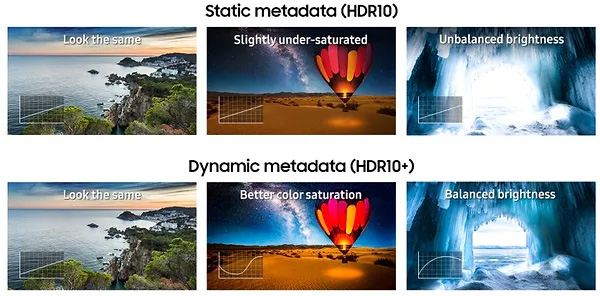
HDR10+ vs. HDR10
Building upon the HDR10 foundation, the landscape evolves with the creation of HDR10+. The introduction of Dolby Vision meant that the basic HDR10 was simply not enough anymore. This enhanced format addresses some of the limitations of HDR10, offering a more dynamic and personalized viewing experience.
Let’s delve into the distinctions between HDR10+ and its predecessor, HDR10.
The Evolution of HDR10+
HDR10+ represents a natural progression, aiming to refine the HDR experience. One significant advancement is the incorporation of dynamic metadata, allowing for scene-by-scene optimization. This dynamic metadata ensures that the display adapts to the specific requirements of each frame, maximizing the visual impact.
Technical Details of HDR10+
HDR10+ specifications are as following
- EOTF: SMPTE ST 2084 (PQ)
- Chroma subsampling: 4:2:0 (for compressed video sources)
- Resolution: Agnostic (2K/4K/8K etc.)
- Bit depth: 10-bit or more (up to 16-bit) per color channel
- Color primaries: ITU-R BT.2020
- Maximum linearized pixel value: 10,000 cd/m2 for each color R/G/B (content)
- Metadata (required): Mastering Display Color Volume Metadata
- Metadata (optional): MaxCLL, MaxFALL
HDR10+ technology can support the full range of HDR standards to 10,000 cd/m2, 8K and BT.2020 color gamut. Being resolution agnostic, metadata needs to be created only once and can be applied to any target resolution.
HDR10+ is supported in video encoding technologies HEVC, AV1, VP9 compatibility via WebM as well as any codec that supports ITU-T T.35 metadata.

Advantages of HDR10+
The incorporation of dynamic metadata in HDR10+ translates into a more nuanced portrayal of shadows, highlights, and color accuracy. This dynamic approach mitigates some of the limitations inherent in static metadata formats. For viewers, this means a heightened sense of realism and a more captivating visual journey.
Compatibility Considerations
While HDR10+ offers undeniable advantages, compatibility remains a crucial consideration. Not all devices and displays support HDR10+, which might influence your choice when selecting content and devices. As HDR10+ gains traction in the market, it’s essential to assess the compatibility of your existing setup or consider it when making new purchases.
Choosing Between HDR10+ and HDR10
The choice between HDR10+ and HDR10 depends on your specific preferences and the devices in your home theater setup. HDR10+ shines in its adaptability to scene dynamics, offering a refined viewing experience. Meanwhile, HDR10 remains a reliable and widely supported format, ensuring compatibility across a broad range of devices.

HLG (Hybrid Log-Gamma)
In the symphony of HDR formats, Hybrid Log-Gamma (HLG) emerges as a unique player, especially prominent in the realm of broadcast television. Let’s delve into the intricacies of HLG, understanding its hybrid gamma curve and exploring its applications in delivering stunning visuals to your home screen.
Understanding the Hybrid Gamma Curve
HLG takes a different approach compared to traditional gamma curves. Its hybrid nature allows compatibility with both standard dynamic range (SDR) and high dynamic range (HDR) displays. This means that content encoded in HLG can be viewed on SDR displays without loss of quality, ensuring a seamless experience for a diverse audience.
Applications in Broadcast Television
One of HLG’s key strengths lies in its application in broadcast television. Its compatibility with SDR displays makes it a practical choice for broadcasters, ensuring that HDR content can be delivered to a wide range of viewers without requiring specialized HDR displays. This adaptability has contributed to HLG’s widespread adoption in the broadcasting industry.
HLG in Live Broadcasting
The real-time nature of live broadcasting demands efficiency and flexibility. HLG excels in this scenario, offering a streamlined approach to delivering HDR content in live broadcasts. Whether it’s a sports event or a live concert, HLG ensures that viewers experience the vibrancy and realism of HDR without compromise.
Choosing HLG for Your Home Entertainment
As a consumer, the choice of HLG depends on your content preferences and the devices in your setup. If you prioritize compatibility across a range of displays and often consume broadcast content, HLG may be a suitable option. Its adaptability and efficiency in live broadcasting make it a noteworthy player in the HDR landscape.

Dolby Vision
Although Part 4 of our “HDR Explained” series is dedicated in Dolby’s offering we could not consider this part complete without any mention on it.
Dolby Vision is a cutting-edge high dynamic range (HDR) technology developed by Dolby Laboratories, designed to enhance the visual experience by providing a broader range of brightness, contrast, and color. Unlike standard HDR formats, like HDR10, Dolby Vision employs dynamic metadata, allowing scene-by-scene optimization for greater precision in presenting details in both bright highlights and deep shadows.
Key Features of Dolby Vision
The key specifications of Dolby Vision include support for a peak brightness of up to 10,000 nits, which far exceeds the capabilities of traditional HDR formats. This ensures an immersive and lifelike viewing experience, especially in scenes with extreme contrast. Additionally, Dolby Vision supports a wide color gamut, capable of reproducing over 68 billion colors, leading to more vibrant and true-to-life images.
One of the standout features of Dolby Vision is its dynamic tone mapping, which dynamically adjusts the HDR presentation based on the specific characteristics of the display device. This adaptability ensures optimal performance across a wide range of screens, from high-end OLED displays to more conventional LED TVs. Dolby Vision also incorporates a 12-bit color depth, providing a smoother gradation of colors and reducing banding for a more refined visual presentation.
Overall, Dolby Vision stands as a pinnacle in HDR technology, offering unparalleled picture quality and versatility for a more captivating and true-to-life cinematic experience.

Technicolor HDR
In the mosaic of HDR formats, Technicolor HDR stands out as a distinctive and influential player, bringing its legacy of color expertise to the forefront.
Overview of Technicolor’s Contribution to HDR
Technicolor, renowned for its contributions to the film industry, extends its expertise to the HDR domain.
Unique Features and Specifications
Technicolor HDR brings a set of unique features and specifications to the table. From advanced color grading capabilities to meticulous attention to detail in tone mapping. Understanding these features provides insights into the distinct characteristics that define Technicolor HDR.
Technicolor HDR availability and Support
In the beginning of the HDR war, Technicolor HDR was supported by many TV brands. Unfortunately the lack of content gradually resulted in this format to be dropped by most consumer brands. Right now almost no new TV or projectors support this format anymore.
Additionally as for 2020 there is no commercial content available authored in Technicolor HDR.
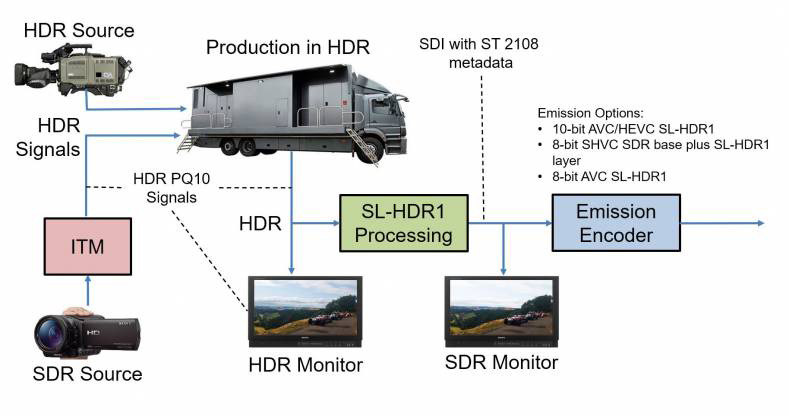
Advanced HDR Formats
In the ever-evolving landscape of High Dynamic Range (HDR), innovation continues to push the boundaries of visual excellence. So in this section we will talk about some of the more advanced HDR formats, delving into newer players like SL-HDR1 and HDR10+ Adaptive.
Overview of Advanced HDR Formats
As technology marches forward, HDR formats evolve to meet the demands of an increasingly sophisticated audience. Formats like SL-HDR1 and HDR10+ Adaptive introduce novel features and capabilities that redefine the HDR experience.
SL-HDR1: Breaking New Ground
SL-HDR1, or Spatial Light High Dynamic Range, introduces a paradigm shift by focusing on spatial light modulation. This innovative approach enhances image quality by addressing challenges related to brightness and contrast. Understanding the principles behind SL-HDR1 provides insights into how it aims to elevate HDR content to new heights.
HDR10+ Adaptive: Dynamic Optimization
HDR10+ Adaptive represents a leap forward in adaptability. This format dynamically adjusts HDR content based on the ambient light conditions of the viewing environment. The goal is to optimize the visual experience in real-time, ensuring that viewers consistently enjoy the intended HDR quality regardless of external lighting factors.
HDR10+ Adaptive is not a new HDR format. It is more like a feature included in TVs that support HDR10+ that uses each TV’s light sensor in order to adjust the image according to the room’s light conditions.
Niche Applications and Specific Use Cases
The above advanced HDR formats cater to specific niches and use cases. SL-HDR1’s focus on spatial light modulation may find applications in scenarios demanding precise control over brightness. HDR10+ Adaptive, on the other hand, targets environments where lighting conditions vary, ensuring a consistent HDR experience. Understanding these nuances helps tailor your HDR choices to your unique preferences and viewing environment.
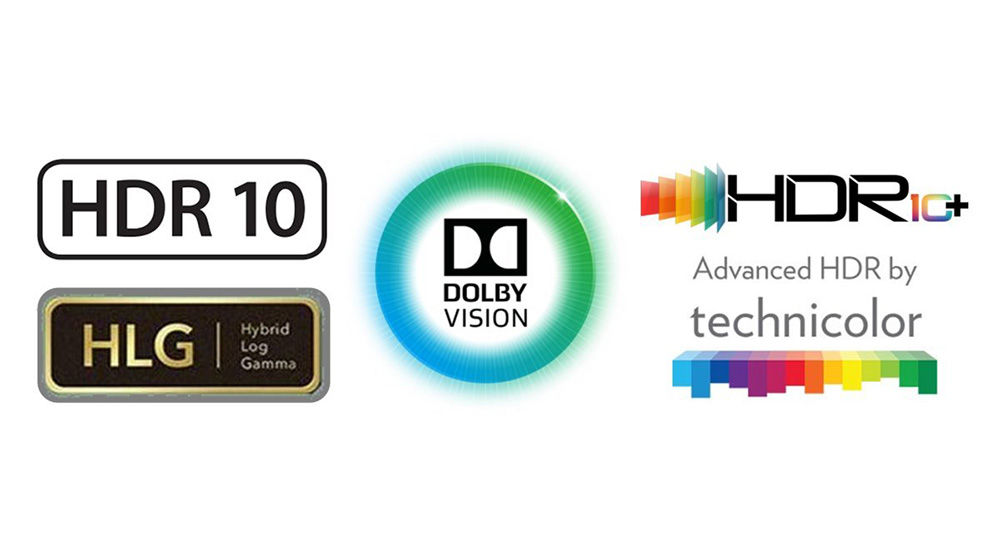
Comparative Analysis
As the spectrum of HDR formats continues to expand, the need for a comprehensive understanding becomes paramount. In this section, we embark on a comparative analysis, placing the spotlight on the diverse HDR formats explored so far.
Side-by-Side Comparison of HDR Formats
A visual feast requires the right canvas, and HDR formats serve as the brushstrokes defining the picture. In this segment, we line up the prominent HDR formats discussed here for a side-by-side comparison. From HDR10 and HDR10+ to HLG and Dolby Vision, each format brings its unique characteristics to the table.
| HDR10 | HDR10+ | Dolby Vision | HLG | |
|---|---|---|---|---|
| Developed By | CTA | Samsung | Dolby | NHK and BBC |
| Year | 2015 | 2017 | 2014 | 2015 |
| Bit Depth | 10 bit | 10 bit | 12 bit | 10 bit |
| Luminance | 1,000 – 4,000 nits | 1,000 – 4,000 nits | Up to 10,000 nits | 1,000 nits |
| Color Primaries | Rec. 2020 | Rec. 2020 | Rec. 2020 | Rec. 2020 |
| Metadata | Static | Dynamic | Dynamic | None |
Considerations for Choosing the Right Format
The choice of an HDR format isn’t one-size-fits-all; it’s a tailored decision based on individual preferences and viewing environments. We delve into considerations such as device compatibility, content availability, and specific use cases to guide you in selecting the format that aligns with your home media aspirations.
Unfortunately not all TV brands support all HDR formats available. Since inception most major manufacturers took specific sides in the HDR war that continue till this day.
Thankfully there are still many brands that prefer to include all available formats in their releases, giving you the consumer the freedom to see whatever content you choose without being limited by your TV’s capabilities.
In the table we created below you can see what HDR formats each brand supports up to this day.
| HDR10 | HDR10+ | Dolby Vision | HLG | |
|---|---|---|---|---|
| Samsung | Yes | Yes | No | Yes |
| LG | Yes | No | Yes | Yes |
| Sony | Yes | No | Yes | Yes |
| Hisense | Yes | Yes | Yes | Yes |
| TCL | Yes | Yes | Yes | Yes |
| Vizio | Yes | Yes | Yes | Yes |
| Panasonic | Yes | Yes | Yes | Yes |
| Philips | Yes | Yes | Yes | Yes |
Impact on Content Creation and Consumption
Beyond technical specifications, HDR formats influence the way content is created and consumed. Content creators leverage the unique features of each format to craft visually stunning experiences, while consumers navigate the landscape to ensure their devices support the chosen HDR format. Understanding this dynamic interplay enriches your appreciation of the content ecosystem.
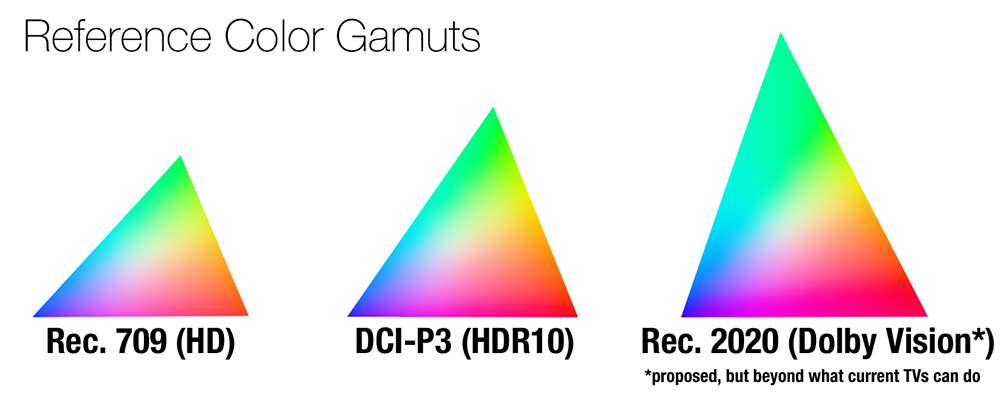
Conclusion
In this journey through the diverse landscape of High Dynamic Range (HDR) formats, we’ve navigated the intricacies of HDR10, HDR10+, HLG, Technicolor HDR, Dolby Vision and advanced formats like SL-HDR1 and HDR10+ Adaptive.
Armed with insights from our comparative analysis, you’re now equipped to make informed decisions when selecting an HDR format. Consider factors such as device compatibility, content availability, and specific use cases. Whether you prioritize scene-by-scene optimization with HDR10+ or seek the adaptability of HDR10+ Adaptive, your choice should align with your unique preferences and viewing environment.
As we wrap up this series on HDR formats, our goal has been to empower you with the knowledge needed to curate a home entertainment setup that exceeds your expectations. Stay tuned for future insights as technology continues to evolve, shaping the future of high dynamic range visuals. Your journey in the world of home media entertainment is just beginning, and the possibilities are as expansive as the HDR formats we’ve explored together.
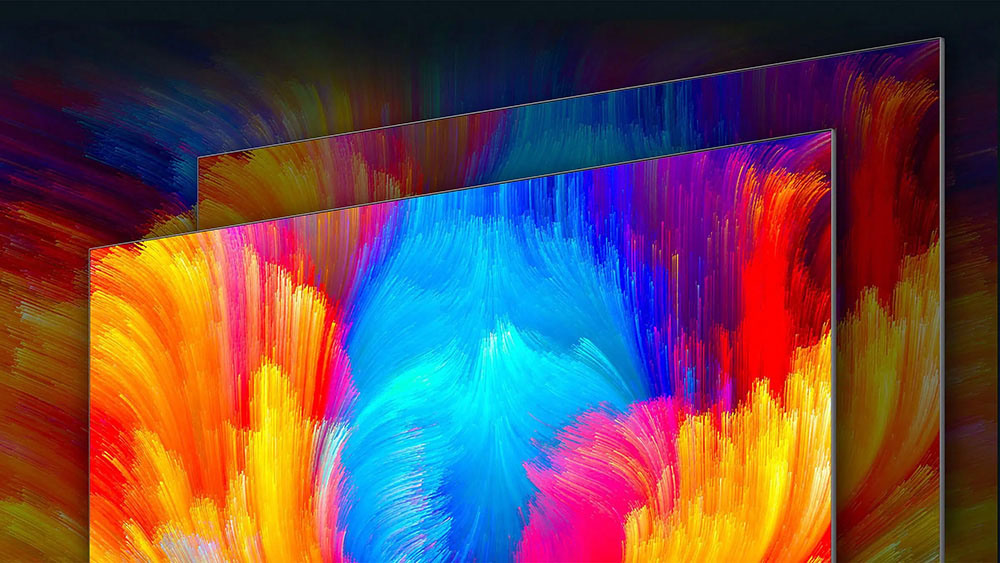
For more educational articles you can check our dedicated Educational Articles section.
Thank you for sharing this new series. Although there are a lot of articles online about the HDR formats I find yours easy to follow. And I cannot wait to see what you will include in the next part. Somehow splitting the information in parts feels more complete instead of trying to put everything in a single article.
Hello there. Thank you for your comment. Next parts are being prepared so keep checking back for them soon!
Hi Stratos,
Your article is very insightful and I highly commend you for its thoroughness.
I took a Digital Image Processing course as part of my Bachelor’s degree in electrical engineering, so I’m happy to say that I could follow along with some of the technical details which I believe many people may struggle with.
You mentioned that both HDR10+ as well as Dolby Vision use dynamic metadata, so how do the two differ in this aspect?
Hello Yusuf. If you look carefully I have added a comparison table that shows their differences. Dolby Vision mastering supports 12 bit color while HDR10+ 10 bit. Also Dolby Vision can support higher luminance levels.
Very informative article, I especially like the comparison tables!
I have a question regarding the dynamic metadata of HDR10+ and Dolby Vision. With dynamic metadata does that means the displays support those format swill display the content dynamically based on their capability? E.g. An OLED TV with peak brightness of 1500nits, it will dynamically tonemap a Dolby Vision content max peak brightness as 1500nits even if the content is mastered in 4000 nits?
If that is the case, can it do the same if a content is mastered in 600 nits with HDR10+/Dolby Vision, will the display dynamically tonemap it to 1500nits as well?
Hello Cody. Tone mapping is the process where the TV compresses the peak brightness of the master content according to the panel’s capabilities. So if the content is mastered at 4,000 nits and your TV has a peak brightness of 1,500 nits then the TV will try to compress the upper limit that is beyond its capabilities without affecting the overall look of the image compared to the original.
If the content is mastered at 600 nits then obviously the TV will not do any tone mapping as the brightness is well within the panel’s capabilities. Although personally I do not know any HDR content mastered at 600 nits as almost everything is mastered at either 1,000 or 4,000 nits.